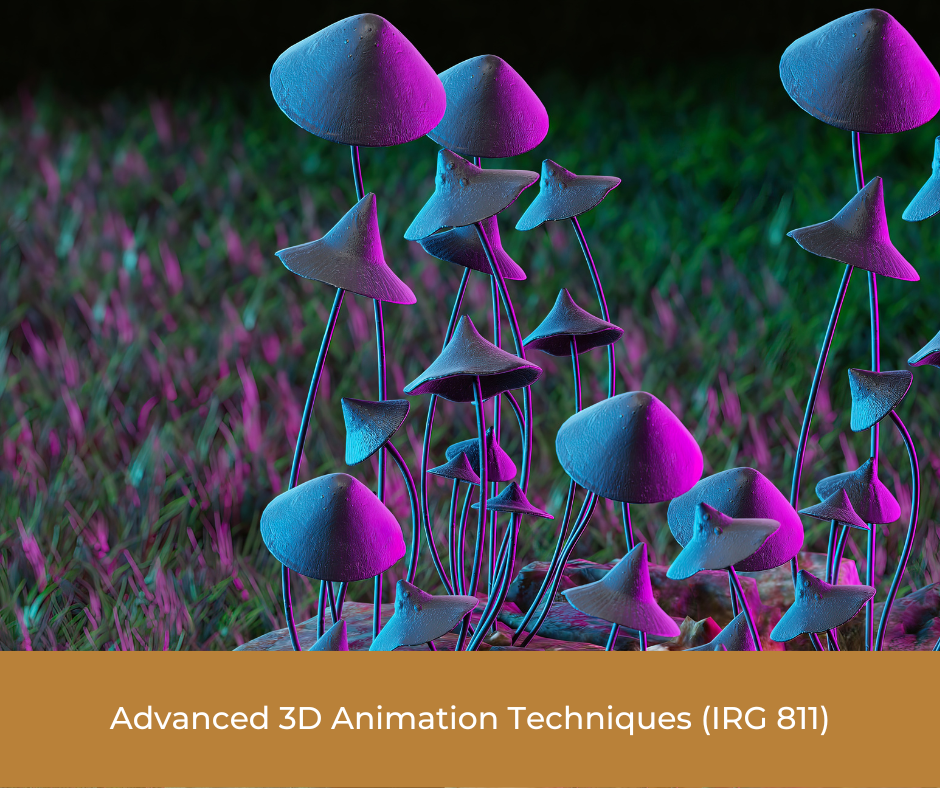Course Title: Advanced 3D Animation Techniques
Course Description: The Advanced 3D Animation Techniques course is a comprehensive exploration of advanced methods in 3D animation, with applications in film, video games, and interactive media. Students will delve into character animation, rigging, and advanced visual effects. By mastering these techniques, students will be well-equipped to bring animated characters to life and create visually stunning and dynamic digital worlds.
Outline of Major Content Areas:
- Character Rigging and Animation:
- Advanced character rigging techniques, including skeleton and control rig creation.
- Character animation principles, such as squash and stretch, anticipation, and follow-through.
- The use of animation software to bring characters to life through expressive movement.
- Advanced Lighting and Shading:
- In-depth understanding of lighting principles in 3D animation.
- Advanced shading techniques, including material properties, texture mapping, and shader creation.
- Realistic lighting setups and the creation of mood and atmosphere through lighting.
- Particle and Fluid Simulations:
- Particle systems for simulating natural phenomena like smoke, fire, and water.
- Fluid simulations to create realistic fluid behavior.
- The integration of particles and fluid dynamics into animation projects.
- Non-linear Animation and Interactive Storytelling:
- Non-linear animation techniques for interactive media and games.
- The creation of branching narratives and player-driven storytelling.
- Incorporating animations into interactive applications and virtual reality experiences.
- Practical Projects:
- Students will undertake advanced 3D animation projects that encompass character rigging, animation, advanced visual effects, and potentially interactive storytelling elements.
- Comprehensive projects may involve the creation of animated characters, environmental scenes, or game assets that showcase the application of advanced techniques.
Course Learning Outcomes:
Upon successful completion of this course, students will be able to:
- Character Animation Proficiency:
- Rig and animate characters effectively using advanced techniques.
- Create lifelike character movements with a deep understanding of animation principles.
- Advanced Lighting and Shading Skills:
- Implement advanced lighting setups to enhance the visual appeal and atmosphere of animated scenes.
- Apply shading and texturing techniques to achieve realistic and visually captivating results.
- Particle and Fluid Simulation Expertise:
- Utilize particle systems to simulate natural phenomena and integrate them seamlessly into animations.
- Create convincing fluid simulations for scenes involving liquids and gases.
- Non-linear Animation and Interactive Storytelling Mastery:
- Develop non-linear animation sequences suitable for interactive storytelling and virtual reality experiences.
- Apply animation techniques to engage users and enhance their interactive narratives.
- Project Development and Presentation:
- Create complex 3D animation projects that demonstrate a command of advanced techniques.
- Present animation projects effectively, showcasing both technical proficiency and creative storytelling skills.
Methods for Assessing Student Learning:
Assessment in this course will include a combination of practical projects, quizzes, examinations, and presentations:
- Animation Projects: Students will complete a series of advanced animation projects, which may include character animations, complex scenes, or interactive media elements. These projects will be assessed for creativity, technical proficiency, and adherence to advanced techniques.
- Quizzes and Examinations: Periodic quizzes and examinations will evaluate students’ understanding of animation principles, technical concepts, and software proficiency.
- Presentations: Students will present their animation projects to the class, demonstrating their ability to effectively communicate and showcase their work.
- Participation and Peer Feedback: Class participation and engagement in critiques and feedback sessions will contribute to the assessment. Students are encouraged to provide constructive feedback on their peers’ projects.
- Final Project Assessment: The culmination of this course will involve the evaluation of the final animation project, which should integrate advanced character rigging, animation, visual effects, and interactive storytelling elements.
By successfully completing this course, students will acquire advanced 3D animation skills and the ability to apply these techniques in the fields of film, video games, and interactive media, further enhancing their creative and technical abilities in the world of animation and digital storytelling.
